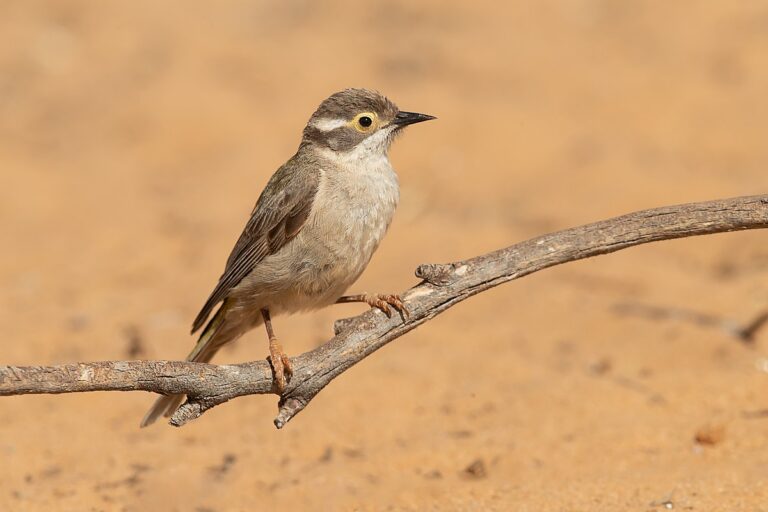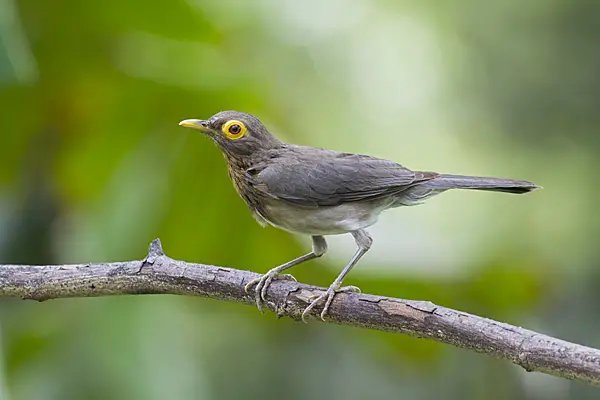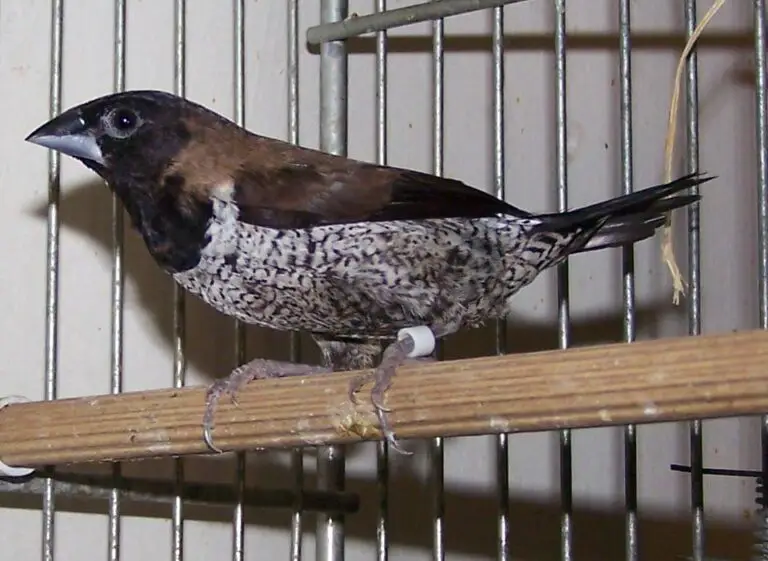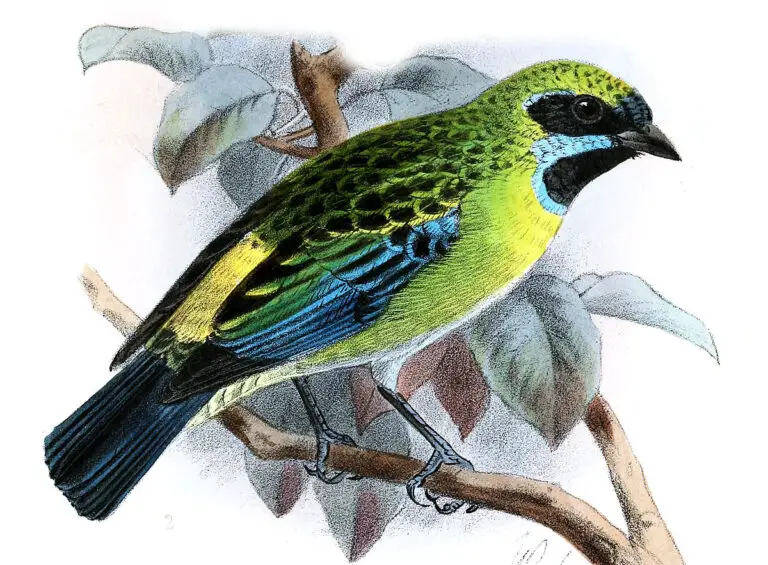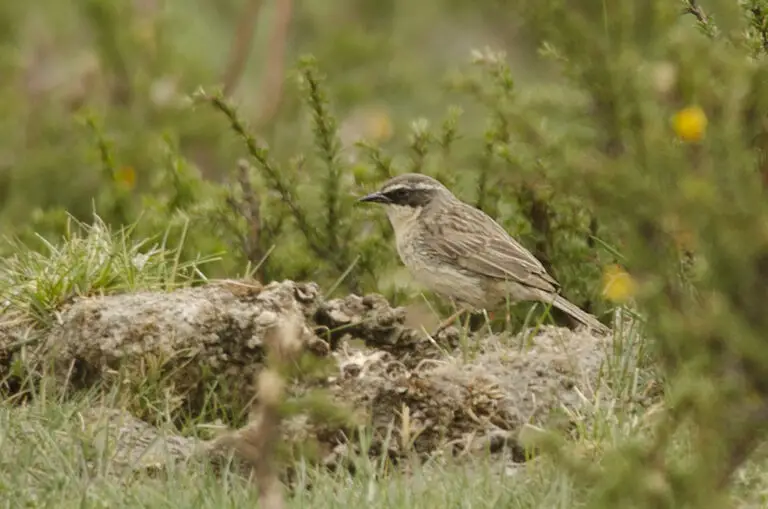Ibis (Threskiornithidae)
“Found in swamps, marshes and wetlands!”
The ibis belongs to the following scientific classification:
- Kingdom: Animalia
- Phylum: Chordata
- Class: Aves
- Order: Ciconiiformes
- Family: Threskiornithidae
The scientific name for the ibis family is Threskiornithidae.
In terms of conservation status, ibises are categorized as “Least Concern.” They are found in various locations across the globe, including Africa, Asia, Central America, Eurasia, North America, Oceania, and South America.
Here are some facts about ibises:
- Main Prey: They primarily feed on fish, crabs, and insects.
- Distinctive Feature: Ibises are characterized by their rounded body, long neck, and long beak.
- Wingspan: Their wingspan typically ranges from 80cm to 120cm (32in to 47in).
- Habitat: Ibises inhabit marshes, wetlands, and swamps.
- Predators: They are preyed upon by falcons, hawks, and herons.
- Diet: Ibises are omnivores, consuming a variety of foods.
- Lifestyle: They often live in flocks.
- Favorite Food: Fish is a favored food item for ibises.
- Type: Ibises are birds.
- Average Clutch Size: They typically lay clutches of about 2 eggs.
- Slogan: They are commonly found in swamps, marshes, and wetlands.
Physical Characteristics:
- Color: Ibises can have brown, grey, black, and white plumage.
- Skin Type: Their skin is covered in feathers.
- Lifespan: They generally live between 8 to 15 years.
- Weight: Ibises weigh between 0.3kg to 2kg (0.6lbs to 4lbs).
- Height: Their height ranges from 50cm to 65cm (19.7in to 25in).
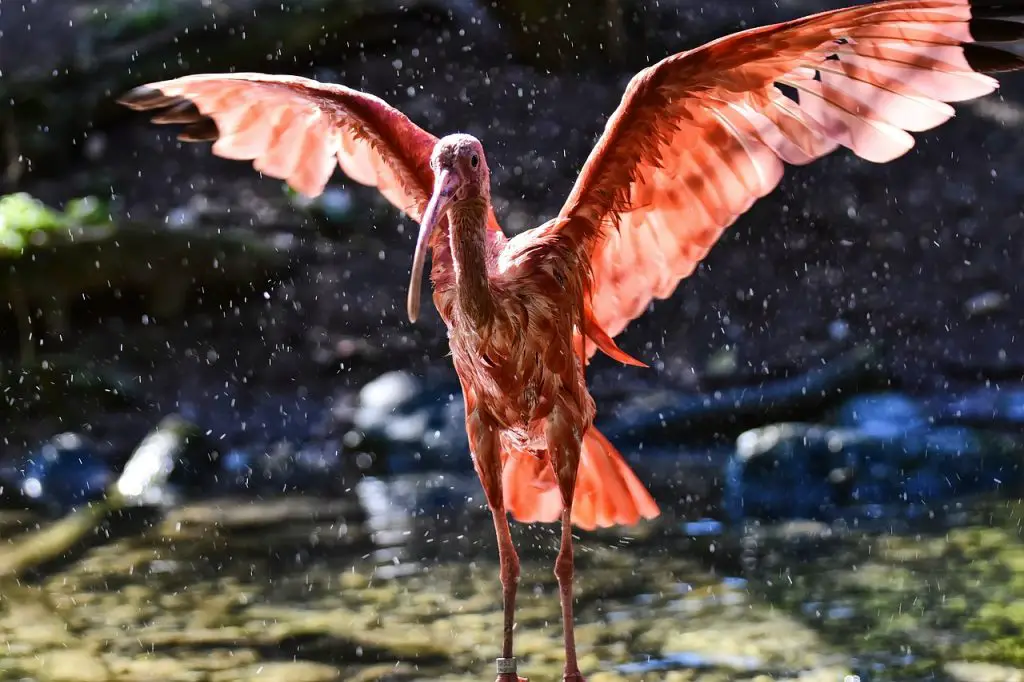
5 Incredible Facts!
- Coloration and Diet: The coloring of an ibis bird is often influenced by its feeding behavior and habitat. For instance, the scarlet ibis obtains its vibrant pink hue from its diet rich in shrimp, akin to flamingos.
- Feeding Adaptations: Ibises possess remarkable adaptations for feeding. They can identify food while probing with their beaks, even without seeing it first, thanks to sensitive feelers inside their bills.
- Breeding Season Displays: During the breeding season, most species of ibises develop bare areas on their heads, faces, and chests. These areas undergo a striking transformation, turning bright red, as part of their breeding displays.
- Parental Care: Both male and female ibises actively participate in incubating eggs and caring for their young. They take turns in these duties, including feeding the baby chicks, showcasing a cooperative parental approach.
- Taxonomic Relations: Ibises are closely related to storks, and they belong to the same order, Ciconiiformes, which also includes spoonbills. This taxonomic relation sheds light on their evolutionary history and ecological connections.
Scientific Name
The classification of the ibis bird is indeed fascinating and rich in history. Here’s a breakdown:
- Class: Aves (birds)
- Order: Ciconiiformes
- Family: Threskiornithidae
- Subfamily: Threskiornithinae
Within the family Threskiornithidae, ibises are further subdivided into 12 different genera, housing a total of 28 extant species. The term “ibis” has its roots in both Latin and Ancient Greek, serving as the traditional name for this group of birds. Notably, the word “ibis” is also linked to the Egyptian term “hab,” which translates to “sacred bird.”
This linguistic and taxonomic heritage underscores the historical and cultural significance of ibises across various civilizations and regions.
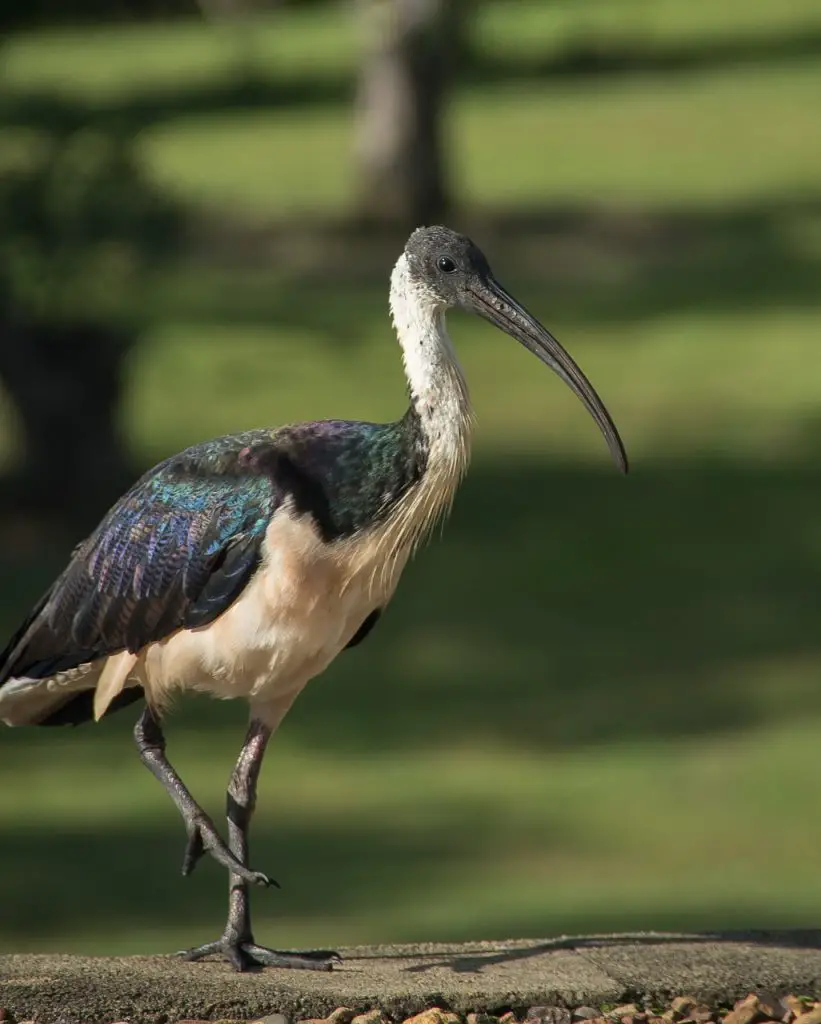
Appearance and Behavior
Ibises indeed display remarkable diversity in appearance across different species, yet they share several common physical traits and characteristics. Here’s an overview:
- Size: On average, ibises range from 22 to 30 inches in length. However, the largest species, the Giant Ibis, can exceed three feet in length and weigh around 10 pounds.
- Sexual Dimorphism: Female ibises are generally smaller than males, weighing about 10 ounces less on average. They also tend to have smaller bills and shorter wings compared to males.
- Body Shape: Ibises typically have football-shaped bodies with long legs and toes, which are well-adapted for wading in marshes and wetlands.
- Bill Structure: One of the most distinctive features of ibises is their long, down-curved bills. These bills are specialized tools used for probing mud and water in search of food.
- Development of Bills: Interestingly, baby ibises are born with straight bills. However, around 14 days after birth, their bills begin to curve downward, gradually adopting the characteristic shape of adult ibises.
These shared characteristics contribute to the overall identity and ecological role of ibises as wading birds specialized for foraging in aquatic habitats.
Ibises truly showcase a fascinating array of behaviors and adaptations. Here’s a detailed look at some of their remarkable traits:
- Color Variation: The coloration of ibises varies greatly among species and is influenced by their dietary habits and habitats. For instance, the Scarlet Ibis’s bright pink hue is a result of its consumption of shrimp.
- Breeding Season Displays: During breeding season, most ibises develop bald areas on their heads or faces, with the underlying skin turning bright red, serving as a visual signal to potential mates.
- Feeding Adaptations: Ibises have specialized bills designed for probing the ground for food. Their nostrils are located at the base of their bills, allowing them to breathe while probing. Additionally, sensitive feelers within their bills help them identify food without needing to see it first.
- Vocalizations: While typically silent, ibises may produce wheezing, squeaking, or breathing sounds during breeding season. Female ibises may also emit special calls to summon their young.
- Social Behavior: Ibises are social birds, often living together in large flocks. They are primarily active during the day, engaging in activities such as feeding, resting, and preening together.
- Flight Patterns: All extant species of ibises are capable of flight and often fly together in flocks. They may fly in straight-line or V-shaped formations, with individuals coordinating their wingbeats in unison. Ibises are adept at transitioning between flapping and gliding while in flight, maintaining extended necks and legs.
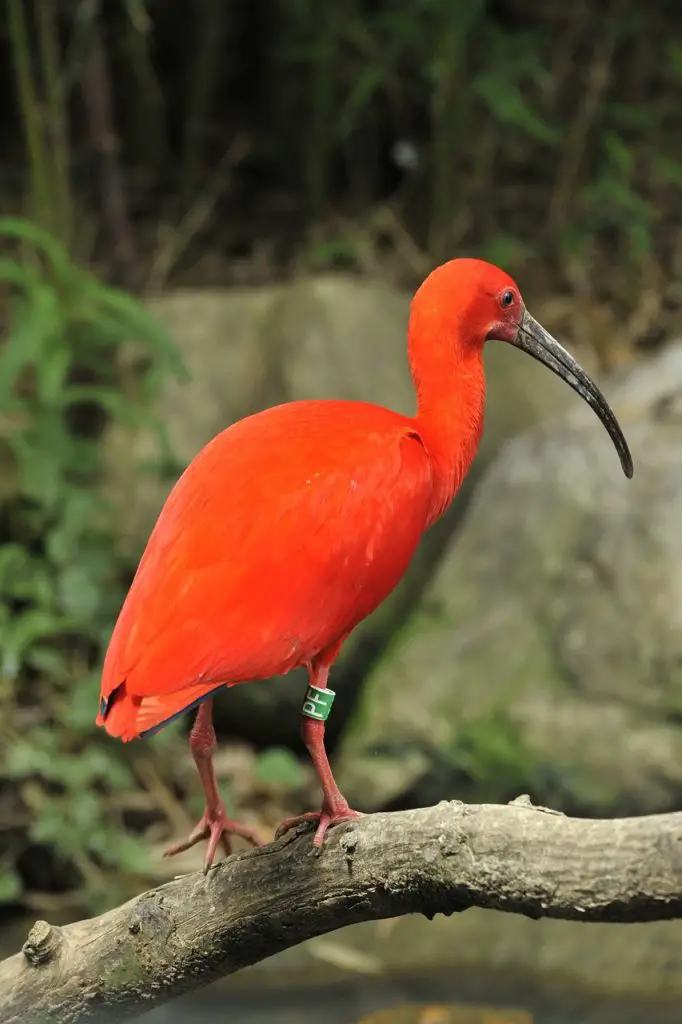
These adaptations and behaviors highlight the remarkable adaptability and social dynamics of ibises, making them intriguing subjects of study in ornithology and ecology.
The nesting and breeding behaviors of ibises demonstrate their social and reproductive strategies. Here’s a closer look at their nesting habits and the process of raising their young:
- Nesting Sites: Ibises construct compact nests primarily out of sticks, usually in low areas of bushes and trees. Some species may also build nests on cliffs. These nests are often situated in large colonies, comprising hundreds to thousands of breeding pairs.
- Breeding Season and Partnerships: Breeding season timing varies among species and habitats. Individual flocks of ibises come together during this time to form massive colonies. While some species mate with the same partner from year to year, others may mate with new partners annually.
- Nest Preparation and Egg Laying: Both male and female ibises participate in preparing the nest for egg laying. Females typically lay three to five eggs per season, with an average incubation period ranging from three to four weeks. During this time, both parents take turns incubating the eggs.
- Feeding Chicks: Upon hatching, ibis chicks are usually covered in brown, gray, or black down. Both parents play active roles in feeding the chicks, regurgitating food for them to consume. This feeding method involves the chicks reaching their heads into the parent’s mouth to retrieve food.
- Fledging and Independence: Ibises chicks fledge, or leave the nest, at around 28 to 56 days on average. They become fully independent within one to four weeks after fledging. However, some species may stay with their parents for an extended period to learn essential skills such as migration patterns and feeding strategies.
These nesting and parental care behaviors highlight the cooperative nature of ibis breeding colonies and the importance of parental investment in ensuring the survival and success of their offspring.
Habitat
Ibises are indeed widespread birds, inhabiting warm regions across the globe, typically ranging from tropical to subtropical climates. While they are commonly associated with wetlands, they can also be found in various other habitats such as farmlands, open meadows, grasslands, and forests. Although most ibis habitats are situated at sea level, some species are capable of thriving in mountainous regions.
In North America, three species of ibises are commonly encountered: the Glossy Ibis (Plegadis falcinellus), the White-faced Ibis (Plegadis chihi), and the American White Ibis (Eudocimus albus). In Africa, species like the Hadada Ibis (Bostrychia hagedash) are prevalent, while in North Africa and the Middle East, species such as the Northern Bald Ibis (Geronticus eremita) can be found. Australia is home to the Straw-necked Ibis (Threskiornis spinicollis), which is found exclusively on the continent.
The sacred ibis (Threskiornis aethiopicus) holds historical significance in Ancient Egypt, where it was revered as a sacred bird. While it is no longer found in Egypt today, the species is primarily distributed across Southern Arabia and Sub-Saharan Africa. This wide distribution showcases the adaptability and resilience of ibises across diverse environments.
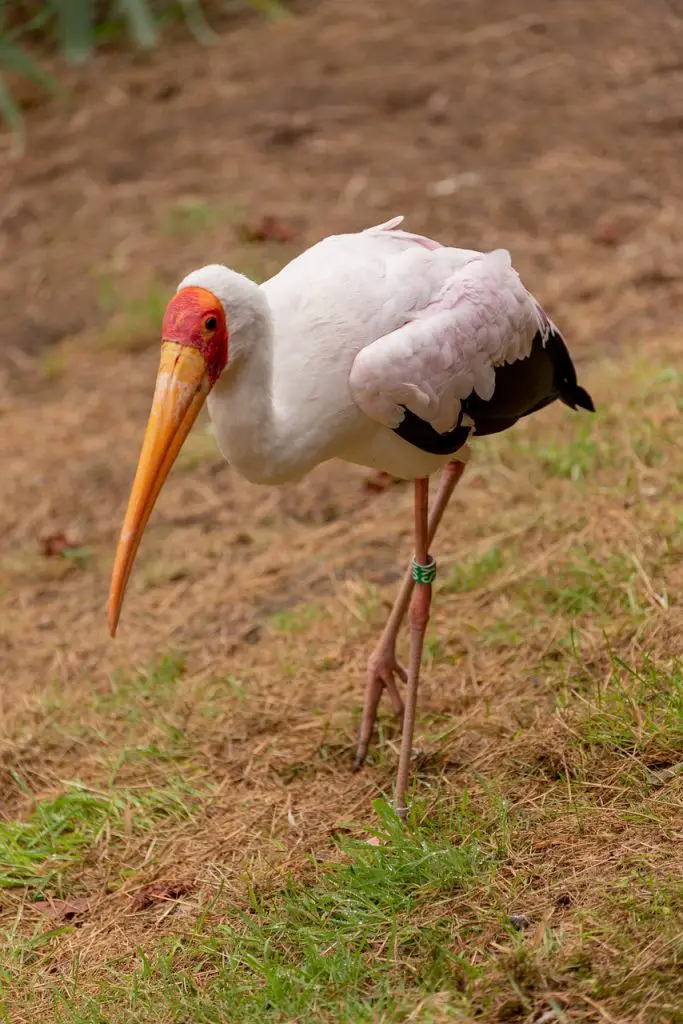
Diet
Ibises’ opportunistic feeding behavior indeed allows them to exploit a wide range of food sources. While they will consume almost anything edible they encounter, they primarily rely on a carnivorous diet. Here’s a breakdown of their typical food preferences:
- Insect Larvae and Worms: Ibises feed extensively on insect larvae and worms, which are abundant in their wetland habitats.
- Shrimp and Crustaceans: These birds commonly consume shrimp, as well as other soft crustaceans, such as crabs and crayfish, when available.
- Beetles and Grasshoppers: Ibises opportunistically prey on various insects, including beetles and grasshoppers, which they catch on the ground or in vegetation.
- Small Fish: Fish make up a significant portion of the ibises’ diet, especially in aquatic environments where they can easily catch small fish species.
- Occasional Plant Matter: While carnivorous, ibises may occasionally consume algae and aquatic plants. However, plant matter typically forms a minor part of their diet compared to animal prey.
This diverse diet allows ibises to adapt to changing environmental conditions and food availability in their habitats, ensuring their survival and success as opportunistic feeders.
Predators and Threats
The conservation status of ibises varies among species, with some facing significant threats to their survival. Here’s a closer look at the conservation status and threats faced by these birds:
- Endangered Species: Several ibis species are classified as endangered by the International Union for Conservation of Nature (IUCN). Examples include the Hermit Ibis of Northern Africa and the Middle East, which has experienced significant population declines and range contraction. The Japanese or Crested Ibis also faced near-extinction in the late 20th century.
- Species at Critical Risk: Other ibis species are listed as facing critical risk, including the Giant Ibis, Dwarf Olive Ibis, Waldrapp or Northern Bald Ibis, and White-Shouldered Ibis. These species are particularly vulnerable to factors such as habitat loss, hunting, and other human-induced threats.
- Extinction and Predation: Six ibis species have gone extinct, with two being flightless birds – the apteribis of the Hawaiian islands and the xenicibis of Jamaica. Ibises face predation from various predators depending on their habitat, including birds of prey, monkeys, crows, snakes, and iguanas.
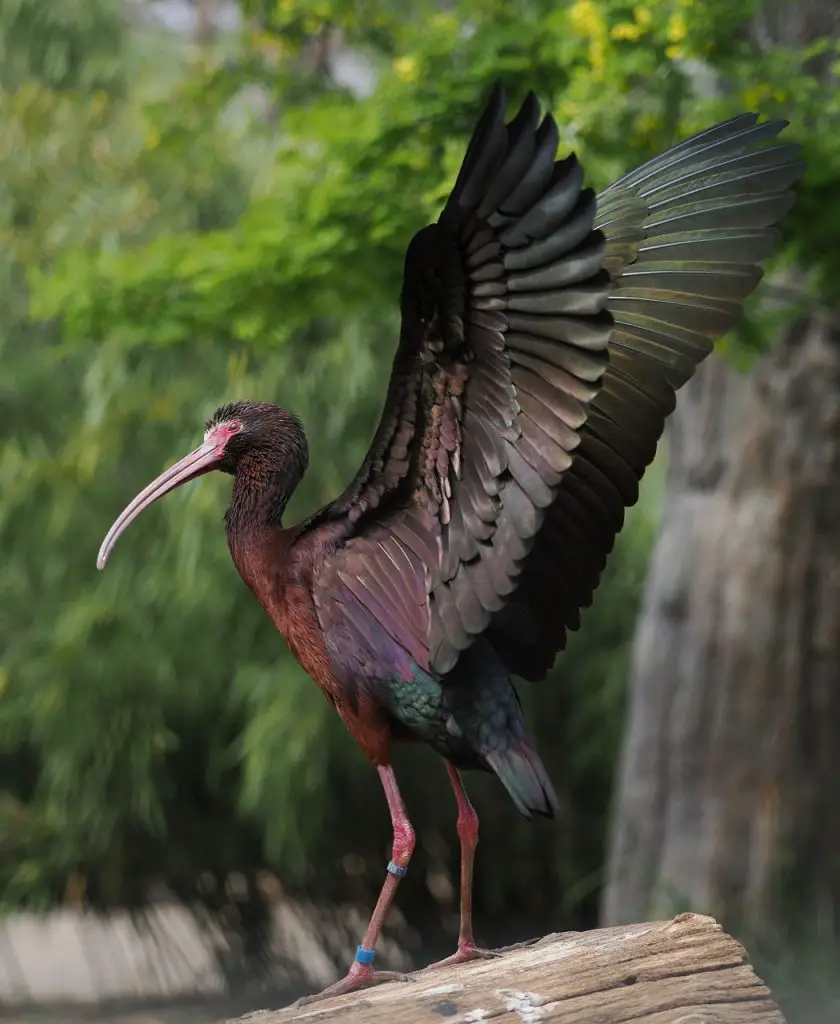
- Threats to Population Levels: Factors such as intense hunting, drainage of wetland habitats, use of pesticides, and commercial logging of nesting sites contribute to the decline of ibis populations. Additionally, ibis eggs and chicks are vulnerable to falling out of nests, further impacting population levels.
Given these threats, conservation efforts are crucial to safeguarding the remaining populations of ibises worldwide. Protecting their habitats, implementing measures to mitigate human-induced threats, and raising awareness about the importance of these birds in ecosystems are essential steps in their conservation.
Reproduction, Babies, and Lifespan
Ibises indeed exhibit fascinating life histories and behaviors throughout their lifecycle. Here’s a summary of their breeding and parental care:
- Lifespan: On average, ibises live for about 16 to 27 years in the wild. The oldest recorded White Ibis was at least 16 years and four months old, highlighting their potential for long lifespans.
- Breeding Season: The timing of the breeding season varies among ibis species, geographical locations, and other factors. During this time, individual ibis flocks come together to form large breeding colonies, where normally silent birds become noisier, emitting sounds to attract potential mates.
- Pair Bonding: Some ibis species mate with the same partner from year to year, while others may mate with different partners annually.
- Nest Preparation and Incubation: Both male and female ibises work together to prepare the nest for eggs, using materials such as reeds, twigs, and grass. Typically, three to five eggs are laid per season, and both parents take turns incubating them for about three to four weeks.
- Parental Care: After hatching, ibis chicks are cared for by both parents. The parents feed the chicks by regurgitating food into their mouths, a process known as “feeding by regurgitation.”
- Fledging and Independence: Ibises chicks begin to fledge, or develop enough for flight, around 28 to 56 days after hatching. It may take another one to four weeks for the chicks to become completely independent of their parents. However, some species of ibis may remain with their parents for extended periods.
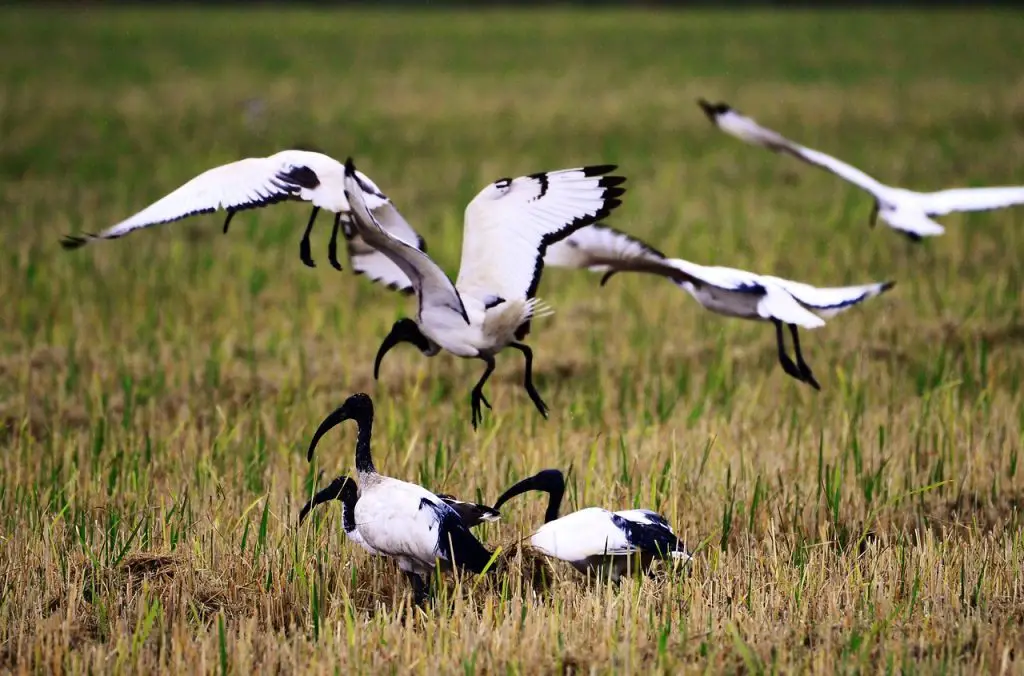
These breeding and parental care behaviors highlight the cooperative nature and investment of ibis parents in ensuring the survival and success of their offspring.
Population
The threats faced by ibis populations, particularly habitat loss, hunting, and pesticide use, underscore the importance of conservation efforts to protect these birds. Here’s a closer look at these challenges and conservation initiatives:
- Habitat Loss: Commercial logging activities and the drainage of wetland habitats for human habitation are significant threats to ibis populations. Loss of nesting sites and essential foraging grounds can lead to declines in population levels.
- Hunting: Ibises are intensively hunted in some areas, contributing to population declines. Overhunting can disrupt breeding colonies and reduce reproductive success, further exacerbating population pressures.
- Pesticide Use: Widespread use of pesticides can have detrimental effects on ibis populations, particularly on egg viability and chick survival. Contaminated food sources can also impact the health and reproductive success of adult ibises.
- Conservation Efforts: Conservation initiatives aimed at improving ibis population levels include habitat restoration, captive breeding programs, and community-based conservation projects. Successful captive breeding programs, like those for the Waldrapp Ibis, have played a crucial role in restoring populations of threatened species.
By addressing these threats and implementing targeted conservation measures, it is possible to improve the outlook for ibis populations and ensure their long-term survival in the wild. Public awareness, community involvement, and collaboration among governments, conservation organizations, and local communities are essential components of effective ibis conservation efforts.
Wrap-up
The ibis bird is a fascinating and diverse species found in various habitats worldwide. With its distinctive features, including its long, curved bill and social behaviors, the ibis plays a significant role in ecosystems as an opportunistic feeder and a key indicator of wetland health. However, habitat loss, hunting, and other human-induced threats pose significant challenges to ibis populations, emphasizing the importance of conservation efforts to ensure their continued survival and ecological significance.
